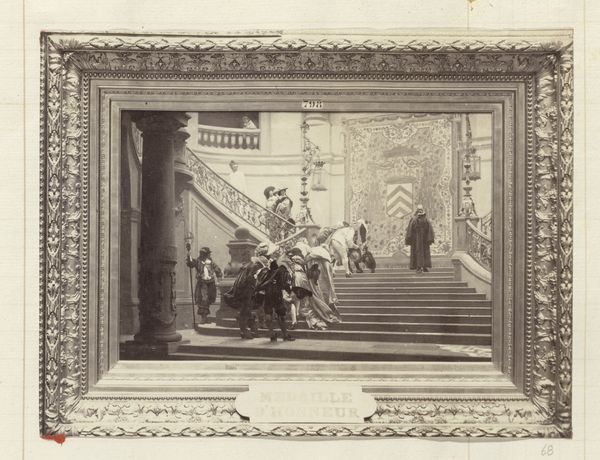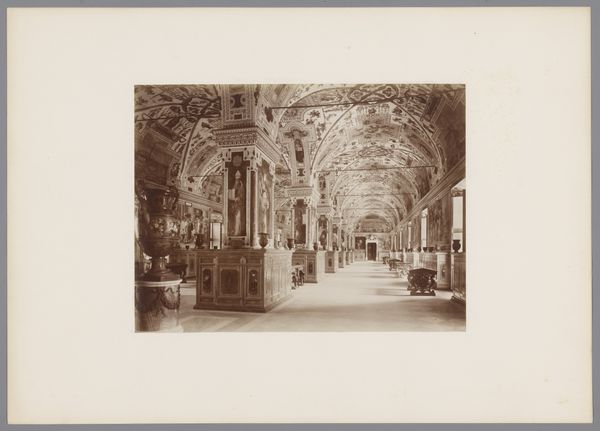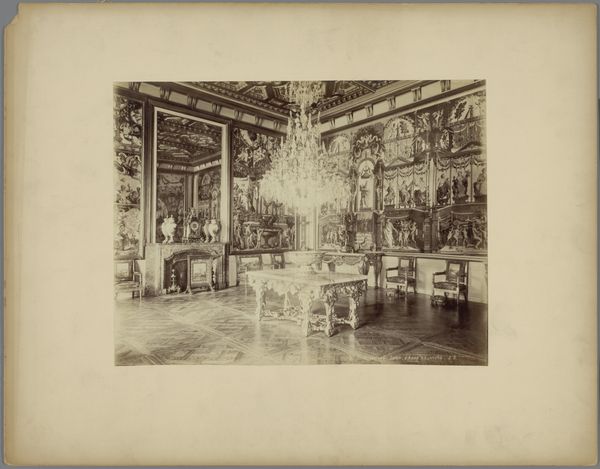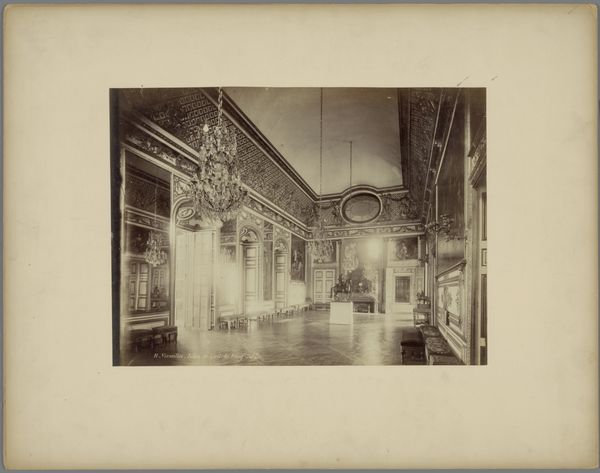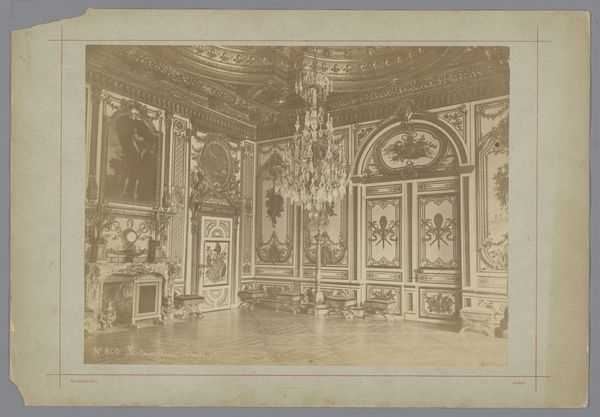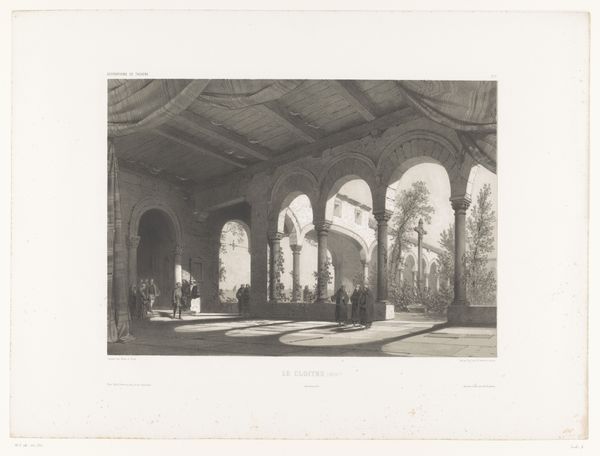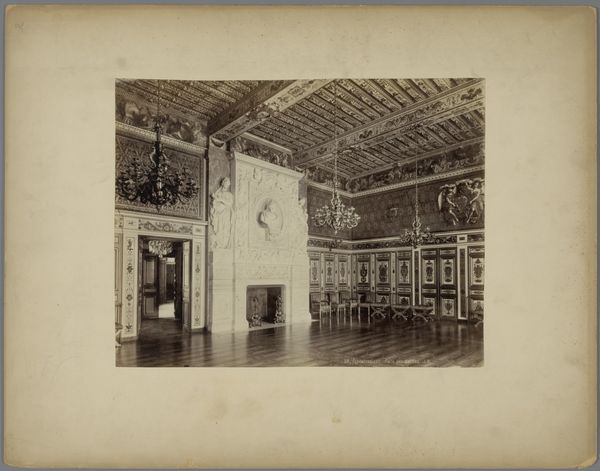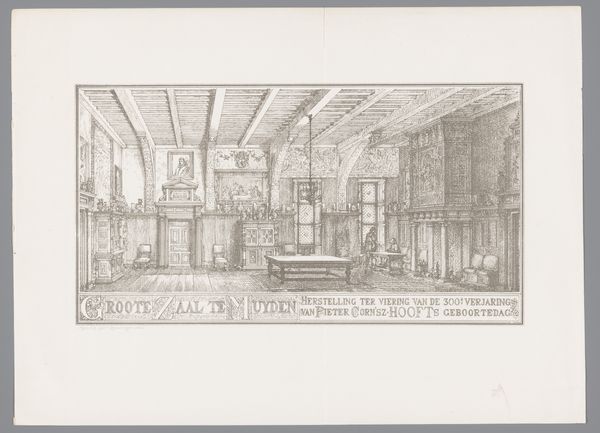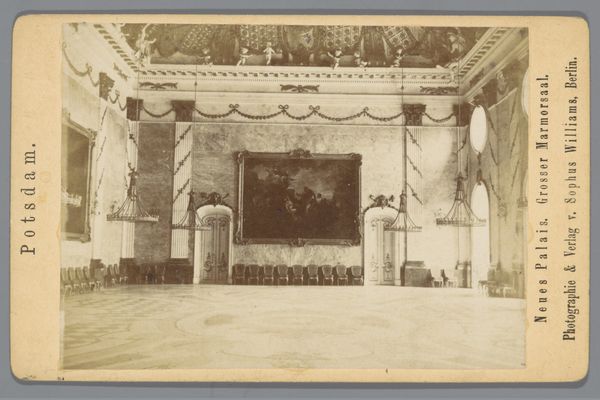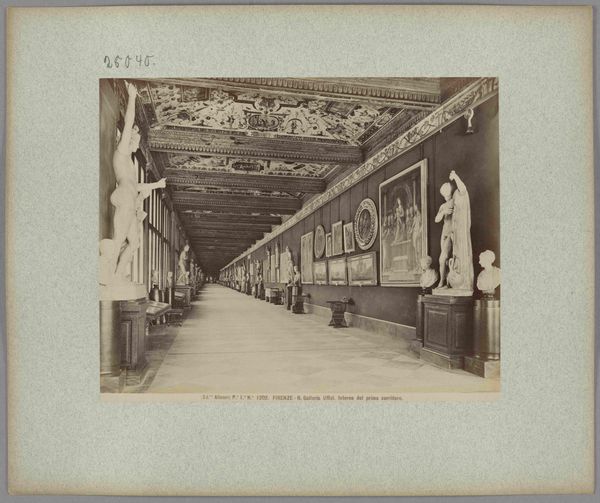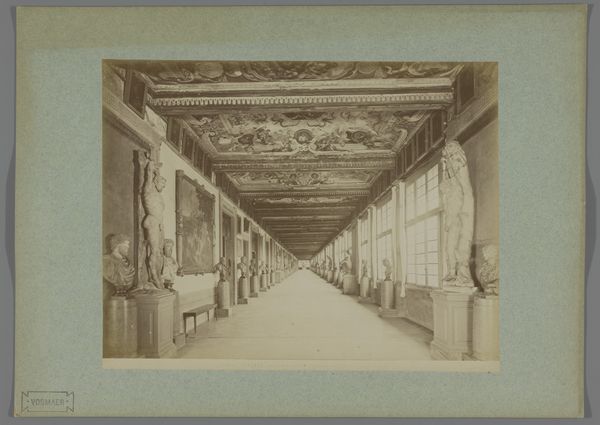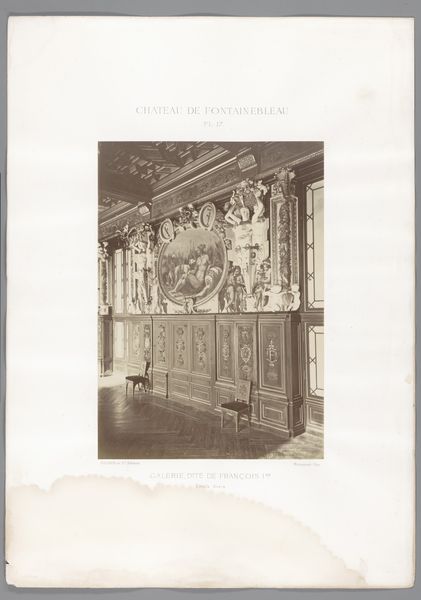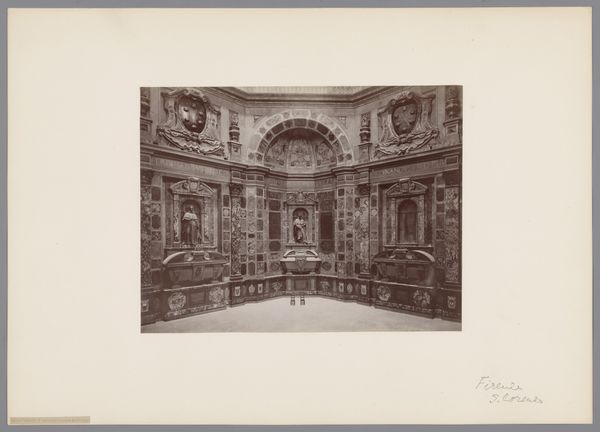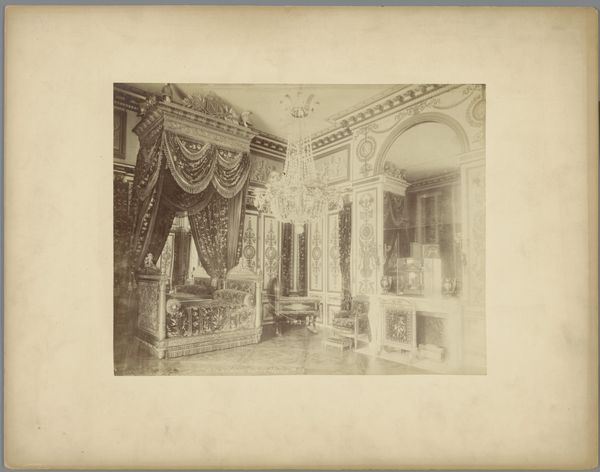
Tentoonstelling van dames handwerken en andere voorwerpen, geschonken voor de loterij ten behoeve van het Fonds DORCAS (...) in de groote Zaal der Societeit Harmonie te Rotterdam den 20, 21, 22 & 23 Maart 1849 1849
0:00
0:00
print, engraving
#
dutch-golden-age
# print
#
old engraving style
#
etching
#
genre-painting
#
engraving
#
realism
Dimensions: height 368 mm, width 545 mm
Copyright: Rijks Museum: Open Domain
Editor: So, this is "Tentoonstelling van dames handwerken..." quite a mouthful, from 1849. It's an anonymous print, an etching really. There's such detail. I'm struck by the formal atmosphere. What exactly is going on here, Curator? Curator: What we see depicted is an exhibition, but not just any exhibition. Note the specific details, the banner proclaiming "Fonds Dorcas." This gives us a vital clue. Dorcas was a biblical figure known for charitable works. Therefore, this isn’t merely a display of handicrafts, but a fundraising lottery for a charitable cause, specifically aimed at aiding the poor. This dramatically reframes the entire image. It reveals a socio-political dimension. What does it tell us about 19th-century Dutch society? Editor: That it wasn't always plain sailing and some needed charity! You can also tell this probably a very middle, upper-class gathering. A lot of well-dressed individuals, not working clothes. It feels… curated for a certain audience. Curator: Precisely! Think about who controls access to art and charity, even today. Consider where it’s being held - the Societeit Harmonie, a social club. How does this location reinforce power structures, who gets access? Also, think about "dames handwerken"- what’s implied about women’s roles, creating items, presumably for wealthier patrons, or as an accepted outlet for feminine skill and industry within acceptable bounds? Editor: So it shows generosity, but within a specific framework of class and gender? Is it then highlighting the existing social hierarchy more than aiming to demolish them? Curator: Exactly. It displays social aid in a controlled setting, maintaining the status quo. Do we learn something about the politics of that time? What could an historical analysis suggest about the museum space itself today? Editor: Fascinating, I see it so differently now. It's more than a genre scene; it’s a snapshot of social dynamics. Curator: Exactly! Always consider who the artwork serves, and what social functions it fulfils.
Comments
No comments
Be the first to comment and join the conversation on the ultimate creative platform.
